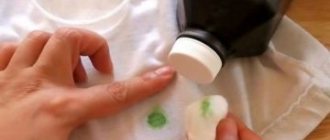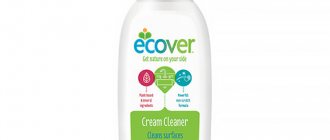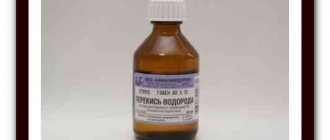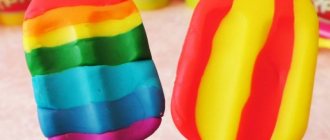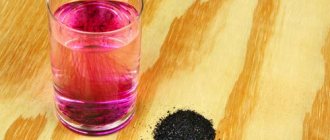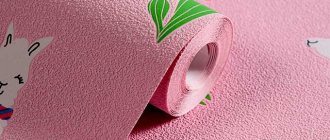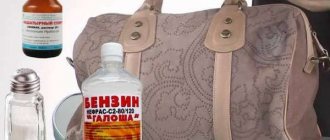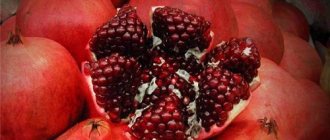Update date: 07/10/2020 15:45:58 5533 Share:
Author: Anastasia Berkovich
*Review of the best according to the editors of simplerule.ru. About the selection criteria. This material is subjective in nature, does not constitute advertising and does not serve as a purchase guide. Before purchasing, consultation with a specialist is required.
A stain found on clothing after a long time is one of the biggest troubles that can happen to an item. After all, an old stain is often difficult not only to remove, but also to generally determine the nature of its occurrence. Don't get upset ahead of time: in most cases the problem can be solved. Our experts have selected the most effective, time-tested methods for removing old stains.
General recommendations
To effectively remove old stains from any clothing and furniture, it is important to follow a few simple rules:
- Before choosing a specific type of cleaner, you need to correctly determine the type of contamination of the material. This will help increase the chances of removing the stain quickly.
- The effect of the chosen product should first be checked on an inconspicuous area of clothing (on a reserve near a seam, on a spare flap, etc.). A particular substance can be used only if no visual changes have occurred on the fabric.
- Do not use highly concentrated formulations under any circumstances. The best option is to use a weaker solution several times, thoroughly rinsing the fabric after each application of the composition.
- Do not use aggressive compounds (in particular, acetone and vinegar) to remove old stains from products made of polyvinyl chloride, acetate, nylon, silk - they destroy the fibers of these materials.
- Before removing the stain, it is important to clean the product from dust with a dry brush and then with a brush moistened with water.
- To slightly soften an old stain, it is recommended to blot it with a small amount of glycerin.
- An old stain should be removed from the wrong side, placing napkins, a blotter or a clean white cloth under it.
- During the work process, you can use a cotton pad, a soft clothes brush, a soft toothbrush, or a white natural fabric to process the fabric.
- You need to wipe the stained area of the product strictly from the edges to the center so that the stain does not spread even more throughout the material.
- Do not use bleaches to clean colored fabrics - they can destroy the paint and the material will change its original shade.
- After successfully removing the stain, the product must be washed using high-quality powder.
Tough stains
If untidy marks on clothes are discovered late, it will be much more difficult to wash them and you will have to put in more effort. Such contaminants are called difficult to remove. Sometimes you have to use strong bleaches to eliminate them, and in some cases only proven folk remedies help, because you don’t want to throw away your favorite things.
There are several types of stains that are very difficult to wash off. This category includes stains from:
- sweat;
- food;
- herbs;
- cosmetics;
- paints;
- blood.
Difficult to remove food stains can be divided into several categories. These are untidy blots from vegetables or fruits, drinks, fatty meat dishes. This also includes any derivative products:
- coffee;
- wine;
- sauce;
- jam;
- ketchup;
- jam;
- juice.
Food stains are easily removed at the very beginning. The more time passes from the moment they appear, the more difficult it will be to clean things up. Before choosing a method to eliminate the problem, you need to determine the type of fabric, the type of stain and the period during which the stains remained on the clothing. After studying the product label, it will be clear what types of processing are acceptable.
- Average life expectancy of women in Russia in 2019
- There may be penalties for early loan repayment
- 5 household allergens that live right under your nose
Determining the type of contamination
Stains can come from completely different origins: you can accidentally sit on a freshly painted bench, drop ice cream on your dress, drip ink on your shirt, etc. Despite the variety of pollutants, they are all conditionally divided into 3 large categories:
- Water soluble
. This group includes all food products containing sugar, as well as water-soluble dyes and wood glue.
- Soluble in organic matter (alcohol, gasoline)
. This category includes any type of fat, machine oil, cream, shoe polish, oil-based paint, and wax.
- Insoluble in water and organic matter
. The most difficult to remove contaminants are blood, urine, mold, water-insoluble paints, protein, metal oxide or salts.
How do you know what the nature of an old stain is? You need to carefully examine it, determine the color and appearance of the borders.
Fat-containing spots do not have clear boundaries (the outline is completely blurred or diverges to the sides in the form of rays). Oily stains are light in color. Old greasy stains, as a rule, appear even on the back of the fabric.
Non-greasy stains (tea, juice, alcohol, etc.) – with sharp edges, color ranges from yellow to dark brown. The center of the spot is lighter than its contours.
Combined stains (dust, milk, sauces, blood, coffee with added milk, etc.) - contain both fatty and non-fatty components. Such contaminants have a more or less clear outline, depending on the amount of fat. As a rule, they only partially penetrate deep into the fibers of the material.
Oxidized stains – there are options with different edges. This kind of contamination appears on the fabric from prolonged exposure to light, oxygen, etc. They may have a yellowish or reddish tint, some turn brown. For example, stains from berries, coffee, and cosmetics oxidize when left on fabric for a long time and are the most difficult to remove.
Effective methods for removing various stains
Fat
The most difficult to treat stains that require aggressive measures taking into account the characteristics of a particular fabric:
- For finicky fabrics, a glycerin-alcohol mixture is perfect. It is necessary to heat the glycerin to 40 0, apply it locally to the soiled area of the product. Then soak the item in water with a small amount of ammonia solution.
- For rough fabrics, you can safely use aggressive compounds such as pure gasoline, white spirit, and acetone. Simply apply the product to the greasy mark and leave for 5-10 minutes. Then thoroughly, but without excessive zeal, rub the stain with a soft sponge.
- For light-colored clothes, the best solution is gasoline with potato starch. Mix purified gasoline with starch until a thick paste is obtained. Apply the prepared mixture to the greasy blot. Wait until the composition dries. Carefully brush off any remaining product with a brush and rinse the product thoroughly in cold water.
- For colored clothes, regular dishwashing detergent will do. Apply undiluted household product onto the contaminated part of the item and wait 15 minutes. Then gently rub the material. Rinse thoroughly.
- For outerwear, a mixture of salt and ammonia is ideal. The composition is prepared at the rate of 5 g of salt per 25 g of ammonia solution (10%). It is enough to wipe the greasy area (usually the collar) with a sponge or cotton wool, moistening it in the resulting solution. Rinse thoroughly.
Sweat
Old sweat stains are especially difficult to remove because they are a mixture of inorganic salts and organic waste. Acids in human sweat eat away the dye in the fabric and damage its fibers. To prevent the product from becoming unusable, you can use one of several home methods for removing such contaminants.
Method No. 1
. Rub the contaminated area with laundry soap. Leave for 20-30 minutes. Rinse thoroughly afterwards. If the stain remains, wipe it with a strong saline solution. Salt will remove dirt without destroying the fibers of the material.
Method number 2.
Mix hydrogen peroxide with water (1 teaspoon of the substance per 1 cup of water). Generously blot away any traces of sweat. If necessary, leave for a short time. Then rinse thoroughly with running water. This option is optimal for white products.
Method number 3
. Table vinegar will easily remove sweat stains from colored clothes. Dilute vinegar (9%) in cool water (ratio 1:8). Use the resulting solution to thoroughly wipe the stained fabric. Immediately rinse the treated area with running water so that the composition does not have time to affect the color of the material.
Method number 4.
Gasoline soap with the addition of ammonia will cope with the oldest traces of sweat on clothes. Rub the resulting mixture onto the problem area a few minutes before sending the product for washing.
Blood
The first step is to soak the trace of blood in cold water (hot water is contraindicated here - this will lead to the coagulation of the protein, which is deeply ingrained into the tissue structure).
Method No. 1
. Ammonia, borax. Treat the stained area of clothing with ammonia solution (1 teaspoon per 1 cup of water). Leave for a couple of minutes. And then carefully apply a borax solution (diluted in the same ratio as ammonia) to the stain for 2-3 minutes. Rinse in cold water.
Method number 2.
Starch. An excellent product for removing blood stains from silk. Dilute the powder in a small amount of water to obtain a thick mixture. Apply a thick layer onto the blood trail and leave until completely dry. Then carefully shake off the residue and wash the product in the machine.
Method number 3.
Acetylsalicylic acid. Excellent for removing traces of blood from wool fabric. It is enough to dissolve a couple of tablets in 1 tbsp. water. Moisten a toothbrush with the mixture and scrub the contaminated area quite vigorously.
Cosmetics
A trace of foundation or perfume, for example, can be efficiently removed using medical alcohol. Hair dye can be easily removed with a mixture of ammonia and hydrogen peroxide (1:1 ratio). Using lipstick will help remove the borax powder. It is enough to lightly sprinkle the stain with borax crystals and leave for a couple of minutes. Afterwards, rinse the material thoroughly with soapy water and then with clean, cool water.
Fruits vegetables
Stains from fruits or vegetables can be removed with a glycerin-vodka mixture (ratio 1:1). If the stain is too old and the above method did not help, you should try the following option: hold the stain over water vapor, then vigorously wipe the stain from the juice with a cotton swab dipped in an vinegar-vodka mixture (an alternative is vodka with lemon juice in a 1:1 ratio). The last step is to wipe the cleaned area with an ammonia solution, slightly diluted with water.
Warm whey will do a great job of removing traces of berries. It is enough to soak the product in it for several hours and then wash it in a convenient way. If after some time of soaking it turns out that the marks do not go away, you can add a pinch of citric acid to the curdled milk.
Advice.
If a stain from pomegranate juice, tomato or apples is found on the fabric, under no circumstances should it be washed with laundry soap. The alkali will further fix the dirt in the fibers of the fabric.
Grass
Grass marks can be easily removed with medical alcohol or strong saline solution. Apply any of these substances to the area of the product stained with grass marks and leave to act for 15-20 minutes. Then rinse in cold water and wash in any convenient way.
Dye
If a trace of paint becomes old, only turpentine can completely remove it. But there is also a minus: it is an aggressive substance that, together with construction paint, can “eat” the paint from the fibers of the material. Before using it, you must check the composition in a hidden area of the product. Only then apply turpentine to the dyed area of the fabric. Leave it until the paint softens. Carefully and quickly remove it with a sharp knife. Immediately wash the item in the machine.
Alcohol
Stains from beer, wine drinks, and champagne can be easily removed with a soap solution combined with soda. Wine stains can sometimes be quite difficult to remove. If this method does not prove effective, you should use an egg-glycerin mixture (yolk and glycerin are taken in equal proportions). Apply the finished composition to the mark of the drink and leave to act for 2-6 hours. Then wash in soapy water and rinse thoroughly under clean running water.
Tea, coffee, chocolate
Chocolate stains from light-colored items can be easily removed with hydrogen peroxide. It is enough to moisten the stain in the composition and leave for about 15 minutes. With traces of tea or coffee, everything is somewhat more complicated. First you need to wipe the contaminated area with a damp brush, having previously moistened it in warm water. Then wash in soapy water with the addition of 1 teaspoon of ammonia and 0.5 teaspoon of soda ash (per 1 liter of water). The last step is to rinse the item in warm water, then in cool water, adding a little table vinegar.
Rust
One of the most difficult contaminants, since iron oxides destroy them upon prolonged contact with the fibers of the material. However, you can try a couple of proven methods.
Method No. 1
. Lemon juice. Soak a cotton swab in freshly squeezed juice and rub it over the rust. Cover the area with a clean, undyed cloth and iron it with a hot iron. Then go over the rust again with juice and rinse the material with warm running water.
Method number 2
. Glycerin + laundry soap. The method is suitable for dyed clothes. Finely grate the soap, pour it into hot water, let it dissolve completely. Then add glycerin (take all components in equal proportions). Apply the resulting composition to the rust stain and leave to act for a day. Then wash in a convenient way.
Ink
Contrary to popular belief, ink marks are quite easy to remove. Use one of several simple ink removal methods:
- Glycerol
– Apply a thick layer of the substance onto the ink stain, leave to act for 40-80 minutes. Then wash using laundry soap.
- Curdled milk
– soak the stained area of the material in warmed sour milk for a couple of hours. Then wash the product by hand in soapy water with the addition of ammonia.
- Turpentine + technical alcohol
– a mixture of these substances (in equal proportions) will easily remove an ink stain. It is enough to gently wipe the ink stain with the effective composition and leave it for 3-5 minutes if necessary.
Special stain removers
It is easier to remove long-standing stains with special wide-spectrum stain removers, according to the manufacturers’ instructions.
Antipyatin
The stain remover contains components that have the ability to remove certain types of fresh and old stains:
- bile;
- glycerol;
- salt;
- caustic soda;
- nitrates based on saturated acids.
The product is available in the form of soap. Recommended for washing white and children's laundry.
Removal method:
- moisten the stained area with warm water;
- lather, rub, leave for 15 minutes;
- wash;
- rinse.
Water temperature for washing is up to 55 degrees. Rinse washed items in warm water.
Vanish
For stubborn stains on white and colored items, the use of active oxygen is effective. For cotton fabrics, stains are removed during the washing process by adding 60 grams of Vanish. Dirt from wool and silk fabrics disappears after soaking in bleach for 1 hour in warm water. Wash by hand.
Ace Oxy Magic
Oxygen-based bleach is intended for washing all types of fabrics (colored and white), with the exception of wool and silk, at a temperature of 30 degrees.
Udalix Oxi Ultra
Oxygen stain remover is used for washing clothes and linen with protein, oil, and mineral stains.
Astonish Oxi Plus
Old stains are removed after pre-soaking. A powerful oxidizing agent discolors stains:
- from greenery;
- blood;
- mold;
- red wine;
- milk;
- eggs;
- sauces;
- juices;
- buttered;
- resinous substances.
The product is used for machine and hand washing.
Bos
To remove stubborn stains, the manufacturer offers Bos plus Anti Stain spray. The main component is oxygen, which is able to remove food contamination from chocolate, wine, mayonnaise, milk, eggs. Suitable for all types of fabrics, including wool and synthetics. Not effective against stubborn stains of blood, juice, or wine.
